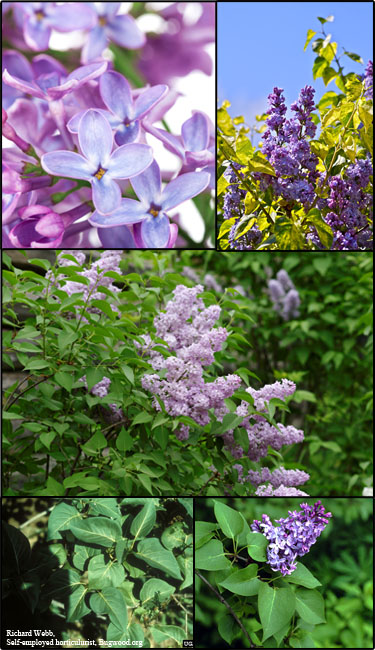Common lilac (Syringa vulgaris)
 Description: Used as farmstead windbreaks. Introduced as an ornamental.
Description: Used as farmstead windbreaks. Introduced as an ornamental.Habit: Medium to large hardy shrub with stout, oval or irregular rounded crown; shallow - dense root system.
Leaves: Opposite, green to brownish-purple with 3 pairs of scales; sessile, subglobose, large, 1/4-1/2 in long, 1 1/2-3 1/2 in wide, simple, cordate, entire, smooth margins, smooth and leathery surface.
Stems: Stout; angled (almost 4 sided) or ridged; lustrous brown; glabrous; numerous raised lenticels; leaf scars raised.
Flowers: Fragrant, borne in large terminal panicles (4-8 in long), showy, singles and doubles, white to purple in color.
Fruit and seeds: Fruit is a woody capsule, brown in color, flat tannish seeds.
Habitat: Native to Europe. Grows well in a wide array of soils.
Reproduction: Cuttings and by seeds.
Similar species: Japanese tree lilac (Syringa reticulata).
Monitoring and rapid response: Landscape fabric; tearing of plant suckers; digging, making sure to completely remove the root system; effectively controlled by any of the several readily available general use herbicides such as glyphosate or naphthaleneacetate. Credits: The information provided in this factsheet was gathered from North Dakota State University and the USDA PLANTS Database.
Individual species images that appear with a number in a black box are courtesy of the Bugwood.org network (http://www.invasive.org).Individual photo author credits may not be included due to the small display size of the images and subsequent difficulty of reading the provided text. All other images appear courtesy of Google (https://images.google.com).
